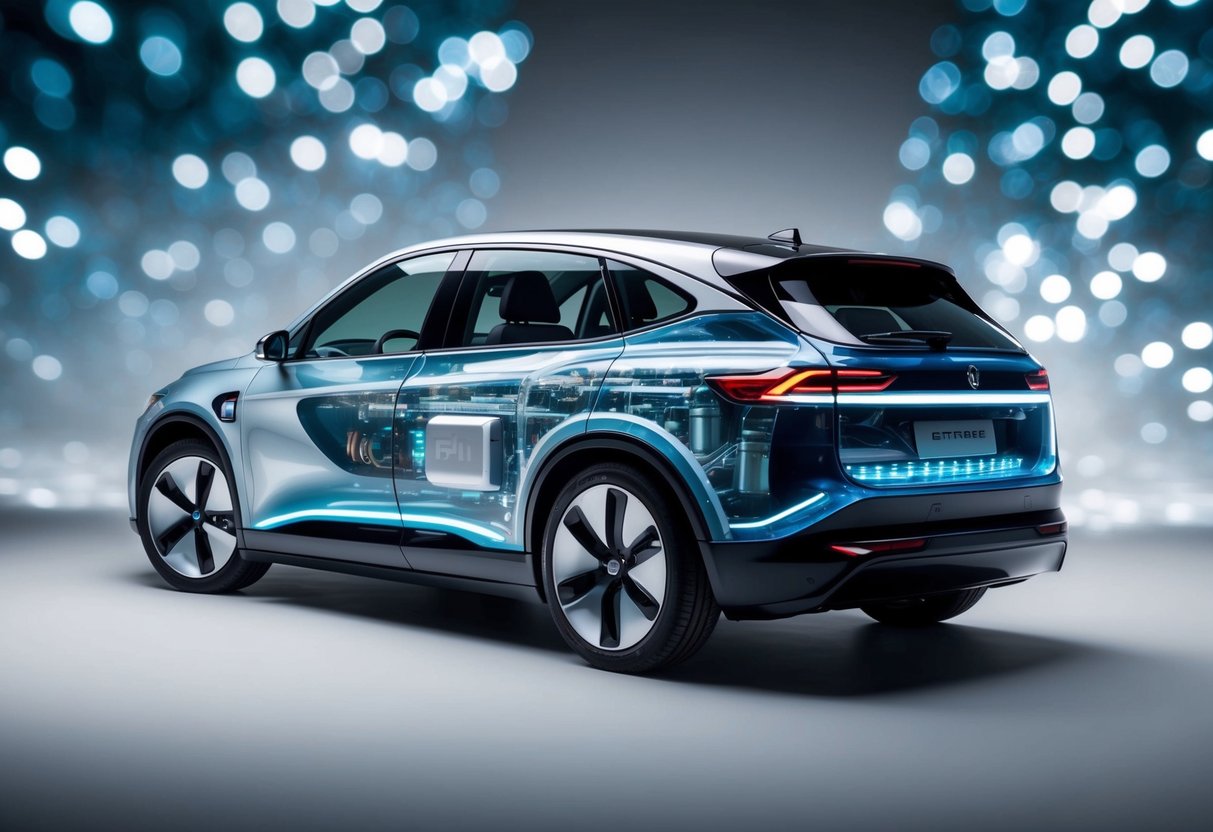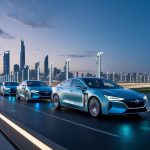
Global Industry Impact and Market Trends
Solid-state batteries are reshaping the electric vehicle market, influencing adoption rates and contributing to sustainable energy advancements. As companies invest in SSB technology, significant trends in long-term market growth are observed.
Electric Vehicle Adoption Rates
Electric vehicle adoption is accelerating, driven by advancements such as solid-state batteries (SSBs). The EV market is benefiting from SSB’s potential to offer higher energy densities and faster charging times. These attributes make electric vehicles more appealing to a broader audience, encouraging more consumers to switch from traditional combustion engines.
Several countries are setting ambitious goals for EV adoption, promoting both manufacturing and sales. Incentives, regulatory frameworks, and infrastructure developments are being introduced to support these targets. The interplay between SSB advancements and EV adoption reflects the growing commitment of governments and manufacturers to facilitate a shift towards cleaner transportation solutions.
SSB Contributions to Sustainable Energy
Solid-state batteries are anticipated to have profound effects on sustainable energy practices. They offer enhancements in energy efficiency and safety compared to conventional lithium-ion batteries. This advancement supports sustainable processing by reducing resource extraction and extending vehicle range.
In addition, SSBs may contribute to the stability of the renewable energy grid. Their improved storage capabilities allow for better integration with solar and wind power sources. This shift aligns with a strategic focus on reducing fossil fuel dependence and promoting sustainable energy solutions globally.
Long-Term Market Forecasts
The long-term forecast for the solid-state battery industry indicates robust growth. Investment in research and development by key industry players continues to drive technological improvements and price reductions, which will likely accelerate adoption in various sectors, notably electric vehicles.
Challenges remain, such as scaling production and managing costs effectively. Despite this, market analysts project a significant increase in SSB market share, driven by strategic partnerships and technological breakouts. The global industry is preparing to witness SSBs’ contribution towards a greener, more efficient transportation future.
Looking Ahead: The Future of Electric Transportation
Electric transportation continues to advance with innovations in smart cars and battery technologies. Supportive government policies and shifting consumer expectations are driving change and growth in this sector.
Next-Generation Smart Cars and Battery Tech
The future of electric vehicles (EVs) depends significantly on advancements in smart car technology and battery innovation. Solid-state batteries offer a promising upgrade over traditional lithium-ion batteries. They present opportunities for increased energy density, faster charging times, and enhanced safety features due to their solid electrolyte material.
Automakers are investing heavily in integrating artificial intelligence and connectivity features, aiming for improved user experience and autonomous capabilities. This includes adaptive systems that optimize energy efficiency and advanced driver-assistance systems. Such innovations are expected to drive mass adoption of EVs, making transportation smarter and more efficient.
Government Policies and Incentives
Government policies and incentives have a heavy impact on the adoption of electric vehicles. Many countries are introducing regulations that favor EV production through tax credits, rebates, and infrastructural support for charging stations. These policies are designed to reduce carbon emissions and promote sustainable transportation solutions.
For manufacturers, these incentives lower production costs and make EVs more competitive against traditional vehicles. This shift is also urging states to focus on developing complementary technologies, such as renewable energy sources, which support the widespread use of EVs. International collaborations are further strengthening these efforts, promoting global standardization and innovation.
Consumer Expectations and Market Demand
Consumer expectations are rapidly evolving with the increasing demand for sustainable and efficient transportation. Buyers are not just looking for functionality but also for advanced technology integrations in electric vehicles. The shift towards environmentally-friendly options has bolstered market demand for EVs with enhanced features.
Solid-state batteries, with their promising energy solutions, are at the forefront of meeting these demands in consumer electronics and vehicles alike. Manufacturers must balance innovation with affordability to maintain market interest. As more people recognize the long-term benefits of EVs, including lower running costs and reduced environmental impact, the industry’s growth is expected to accelerate.



